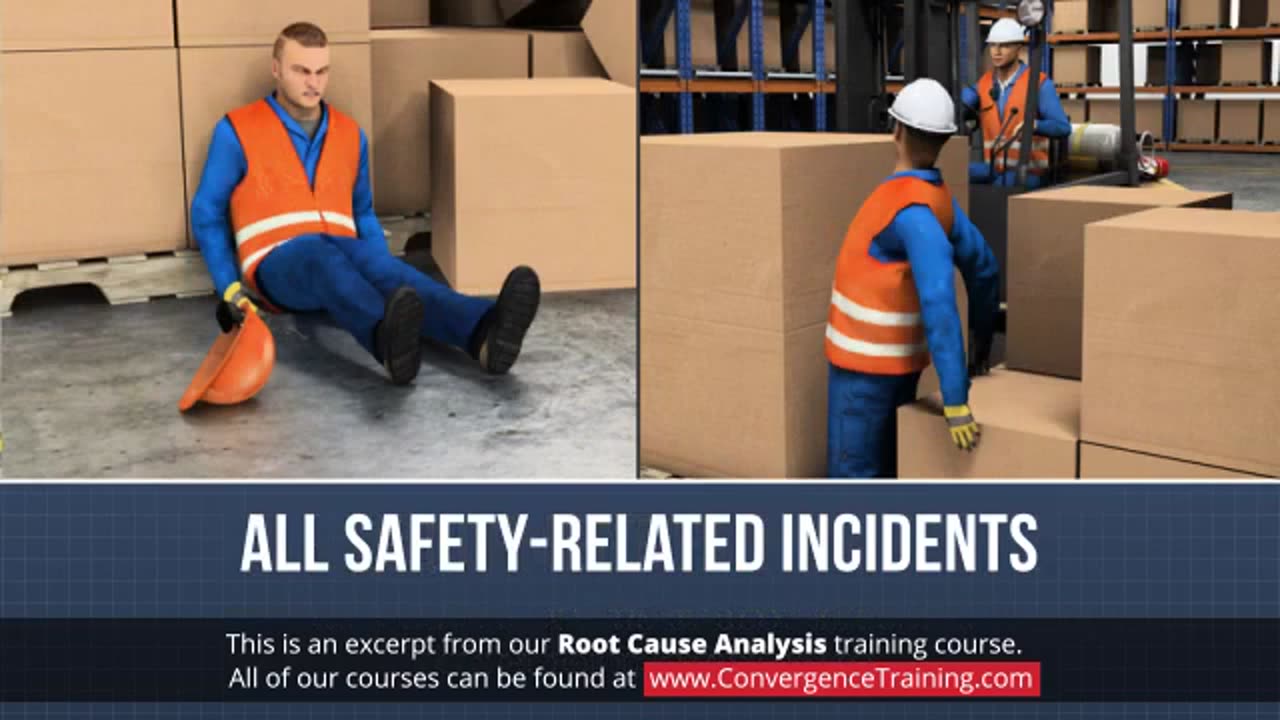Premium Only Content

Root Cause Analysis (RCA)
### **Root Cause Analysis (RCA)**
**Root Cause Analysis (RCA)** is a systematic process used to identify the **underlying causes** of an incident, problem, or failure to prevent recurrence. It is widely applied across industries, including manufacturing, healthcare, education, and safety management.
---
### **Purpose of RCA**
- Identify the **root cause(s)** of a problem, not just its symptoms.
- Prevent the issue from recurring.
- Improve processes and systems for long-term solutions.
---
### **When to Use RCA**
RCA is conducted when:
- A **safety incident** or accident occurs.
- Equipment or process **failure** causes downtime.
- **Repetitive issues** occur despite corrective actions.
- Quality control identifies **non-conformances**.
---
### **The RCA Process**
The RCA process typically follows these **5 key steps**:
#### **1. Define the Problem**
- Clearly describe **what happened**, when, and where.
- Gather evidence, including:
- Incident reports
- Interviews with those involved
- Data logs or records
**Example**: *"A machine failure occurred at 10 AM, stopping production for 2 hours."*
---
#### **2. Collect and Analyze Data**
- Gather **quantitative and qualitative data** relevant to the problem.
- Review timelines, processes, and systems.
- Identify contributing factors:
- **Human errors**
- **Equipment malfunctions**
- **Procedural gaps**
---
#### **3. Identify Root Causes**
Use RCA tools to determine the root cause(s):
- **5 Whys Analysis**:
- Ask “Why?” repeatedly (usually 5 times) to drill down to the root cause.
- **Example**:
1. *Why did the machine stop?* → The motor overheated.
2. *Why did the motor overheat?* → The cooling fan failed.
3. *Why did the cooling fan fail?* → It wasn’t maintained.
4. *Why wasn’t it maintained?* → Maintenance schedule was missed.
5. *Why was the schedule missed?* → Staff shortages led to delays.
- **Fishbone Diagram (Ishikawa)**:
- Categorize causes into key areas:
- **People** (training, human error)
- **Processes** (procedures, workflow)
- **Equipment** (breakdowns, wear-and-tear)
- **Environment** (temperature, lighting)
- **Materials** (quality issues, shortages)
- **Failure Mode and Effects Analysis (FMEA)**:
- Assess all failure points in a system and their impact.
---
#### **4. Implement Corrective Actions**
- Develop solutions targeting the **root cause(s)**.
- Implement **corrective and preventive actions (CAPA)**.
- Ensure actions are **specific**, **measurable**, and **realistic**.
**Example**:
- Root Cause: Missed maintenance schedule due to staff shortage.
- Corrective Action: Implement a digital maintenance tracker and cross-train employees.
---
#### **5. Monitor and Verify Results**
- Track the effectiveness of corrective actions.
- Use metrics and key performance indicators (KPIs) to verify improvement.
- Conduct regular follow-ups to ensure issues do not recur.
**Example**: Review monthly maintenance logs to confirm tasks are completed.
---
### **RCA Tools and Techniques**
1. **5 Whys Analysis**
2. **Fishbone Diagram (Ishikawa)**
3. **Pareto Analysis** (80/20 Rule): Identify the most significant problems.
4. **Fault Tree Analysis (FTA)**: Logical diagrams to map causes of failure.
5. **Flowcharts**: Visualize process steps to find breakdowns.
---
### **Benefits of RCA**
- Prevents recurring problems.
- Reduces costs related to downtime, repairs, or safety incidents.
- Enhances **workplace safety** and quality.
- Improves processes and overall efficiency.
---
### **Common RCA Mistakes**
- Stopping at **symptoms** instead of root causes.
- Failing to gather sufficient data.
- Not involving all relevant stakeholders.
- Implementing quick fixes instead of long-term solutions.
---
### **RCA Example Scenario**
**Incident**: A worker slips and falls in a warehouse.
1. **Define the Problem**: Worker fell at Location A at 8 AM.
2. **Collect Data**: Wet floor, poor lighting, no signage.
3. **Identify Root Cause**:
- **Why?** Wet floor.
- **Why?** Water leaked from equipment.
- **Why?** Routine inspections weren’t conducted.
4. **Corrective Actions**:
- Fix equipment leak.
- Conduct regular inspections.
- Improve lighting and add “Wet Floor” signs.
5. **Verify Results**: Monitor for future leaks and ensure inspections occur.
---
Would you like further details on implementing RCA in your organization or a template for specific tools like the **Fishbone Diagram** or **5 Whys Analysis**? Let me know!
-
 20:24
20:24
HSESafetyInformation
6 months agoKABULI PULAO RECIPE - Original 40+ KG Afghani Meat Pulau Prepared - Street Food Qabili Plav Recipe_2
35 -
 4:09:32
4:09:32
EricJohnPizzaArtist
6 days agoAwesome Sauce PIZZA ART LIVE Ep. #59: Are You Ready for some FOOTBALL with GameOn!
35.7K7 -
 1:21:43
1:21:43
Jake Shields' Fight Back Podcast
15 hours agoJake Shields and Paul Miller!
69.5K120 -
 1:20:41
1:20:41
TRAGIKxGHOST
6 hours agoTrying to get SCARED tonight! | Are You SCARED!? | Screams Beyond Midnight | Grab a Snack
24.9K2 -
 5:21:24
5:21:24
StuffCentral
8 hours agoI'm baaack (no you can't play with me.. unless you a healer)
25.5K4 -
 2:25:11
2:25:11
TheSaltyCracker
10 hours agoTrump Is Not Dead ReEEeStream 8-31-25
103K143 -
 3:09:16
3:09:16
THOUGHTCAST With Jeff D.
8 hours ago $5.10 earnedLabor Day Weekend FORTNITE With THOUGHTCAST Jeff & the squad
27.1K4 -
 3:44:05
3:44:05
Rallied
10 hours ago $6.78 earnedSolo Challenges All Day
50.7K1 -
 9:02:14
9:02:14
iCheapshot
11 hours ago $0.54 earnedCall of Duty: Black Ops Campaign
14.7K1 -
 4:39:16
4:39:16
Meisters of Madness
12 hours agoMadness in a Pod
12.5K1